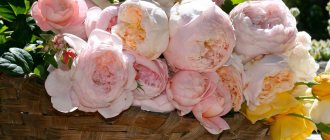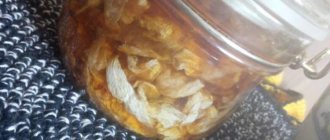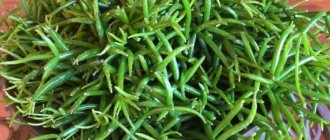Caring for asters
Garden aster belongs to the genus Callistephus, family Asteraceae (Asteraceae). Their homeland is Eurasia, but they also grow in North and South America and Africa. includes more than 200 species and many varieties. There are annual and perennial varieties.
Appearance
The plant has hard or branched leaves, green in color, sometimes with a reddish tint. The leaves are arranged alternately. The inflorescence is a basket. Aster flowers have such a variety of shapes that they are divided into classes (Tubular, Transitional, Reed). The classes are divided into subclasses into 10 types: Tubular, Simple, Semi-double, Coronal, Curly, Radial, Imbricated, Needle-shaped, Hemispherical and Globular.
Lighting requirements
Asters love diffused sunlight. It is better to shade them from the hot midday sun.
When choosing a location on a site, give preference to western and southern orientation.
Watering mode
Asters need to be watered 12 times a month, in normal warm weather. When it gets hot and low humidity water the plant generously. However, the soil should not be allowed to become waterlogged.
Also, asters cannot grow in swampy soils and soils with high groundwater levels.
Soils
Ideal soils for asters are light, sandy, neutral and slightly acidic humus loams. If you have low-humus sandy soil, improve it by adding humus or rotted compost. If your soil is too heavy and clayey, add a mixture of soil and sand or /perlite/peat taken from in proportions 1:1. Acidic soil needs to be deoxidized - for this you can add lime (1/3 of lime per part of the soil, but it is better to calculate the dose depending on the degree of acidity of the soil).
Every year in the fall you can add 10 kg of humus per square meter of soil, this will improve its structure and increase fertility.
Fertilizers
Fertilizing asters looks like this:
- Autumn: add 2-4 kg of humus per 1 square meter of soil or rotted compost for digging;
- Spring: apply complex mineral fertilizers for digging;
- In summer: feed the asters three times. The first is after 15 days from the date of planting (use complex mineral fertilizer with a high phosphorus content). The second - during the budding period, only with complex phosphorus-potassium fertilizers (these elements are responsible for the formation of beautiful flowers). Select dosages according to the instructions on the label.
How to save asters in a bouquet
How to save cut asters if you want to bring a bouquet with you from the dacha?
- First, you should cut the flowers on time. This is done after the buds have fully opened , since the aster does not have the ability to bloom while in a vase.
- The bouquet is placed in settled water at room temperature (in cold tap water the flowers will quickly wither). It is best to boil it and let it sit for several hours.
- Before storing cut asters, all lower leaves are removed . If this is not done, pathogenic microflora will quickly form in the water, which will accelerate the process of withering of flowers.
- The ends of the stems should be trimmed with a sharp knife or blade by 0.5 centimeters so that the cut is oblique . It is best to do this in water so that air bubbles do not clog the ducts of the stems.
- Storage of cut asters will be long-lasting only in a properly selected vase . It should hold at least 1 liter of water, and have a wide enough neck so that the stems can fit freely in it without squeezing each other.
- Replacement of water with fresh water should be done daily . At the same time, the cuts on the stems are renewed, and the vase is washed well from the inside.
A tablet of acetylsalicylic acid (aspirin) dissolved in water for flowers will help them stay fresh for up to 1 month.
Regular spraying with water from a spray bottle will help the bouquet last longer, but it is the leaves that need to be refreshed, not the buds.
You can store the aster longer after cutting if you add a spoonful of ethyl alcohol or the same amount of sugar per 1 liter of water to the water. This will protect the stems from premature yellowing and wilting.
If anyone is interested in how to store asters without water, it is worth adopting a proven method. The bouquet should be regularly sprayed with sparkling water. At the same time, it should get on all parts of the flowers, including the buds. This method will help preserve asters without water for 3 days.
All cut flowers need cool, fresh air, but not a draft. The room where the bouquet is located should be ventilated frequently. It is best if it is constant air conditioning with temperatures up to +20°C. Do not forget that asters prefer cold air and are frost-resistant plants. Therefore, at night it is better to send the bouquet to the balcony, garden or other cold place.
Cut asters should not be stored in a warm room, in the kitchen, where the temperature is always elevated, or on a sunny windowsill.
Astra - planting and transplanting
If you plan to grow aster in the non-chernozem zone, then you need to prepare the seedlings:
- In an apartment, seeds are sown in March, and in a greenhouse or greenhouse - in April. Prepare the soil - mix two parts soil and peat with one part sand;
- Pots or cups for seedlings and soil must be treated with a solution of potassium permanganate to avoid infection;
- Seeds are scattered on moist soil and covered with paper; when seedlings appear, the paper is removed and watering begins (usually 3-5 days);
- It is important to maintain a temperature of 16-18°C during the day and 12-15°C at night;
- Seedlings dive when the first true leaf forms - seedlings are planted at a distance of 5-7 cm, possibly in a checkerboard pattern. Feed with complex mineral fertilizers;
- Planted in open ground at the end of May, preferably in the evening. Low-growing varieties are planted at a distance of 15 cm, and tall varieties - 25 cm. It is necessary to water the holes before and after planting, and then mulch them.
Aster transplant
Perennial asters can be replanted, for example, if there is not enough space for them or there are sick plants nearby and there is a risk of infection. This does not harm the plant, due to the fact that the roots tightly fit the earthen ball; it can be replanted at any time. The plant should be replanted in the evening. Before and after, water the aster well and the hole into which you will transplant the plant.
How to preserve asters in winter
Summer residents who have been growing asters for many years know that this perennial plant is quite frost-resistant. But in order to extend the life of each bush to 5 seasons, they are pruned in late autumn. And the rhizomes are dug up and planted.
After removing the roots from the soil, they are treated with a weak solution of potassium permanganate. This is a good prevention of diseases and fungal infections.
Young plants are covered with foliage on top (you can use peat or humus) so that they do not freeze when cold weather arrives.
Aster - reproduction
Aster has two methods of propagation: dividing the bush and cuttings.
Cuttings
In spring or summer, you need to cut off young shoots from the stem. You need to cut at an acute angle, trim the leaves to reduce evaporation. Treat the cut with a growth stimulator (heteroauxin solution). Dig in and cover with film. After a month, when they take root, remove the film.
Dividing the bush
In the fall, you can propagate perennial asters by dividing the bush. It is better to do this with asters that have reached the age of five. To do this, just dig them up, separate them and plant them in different places.
Perennial aster - botanical description
Aster got its name from the Greek word for “star”. And indeed, it somewhat resembles a multi-rayed star. This herbaceous plant of the Asteraceae family can be an annual or delight the eye for many years.
Perennial asters have smaller inflorescences, but they are no less bright and beautiful. It's not called the aster aster for nothing. What we used to call petals are actually reed flowers of various colors, and the middle is small tubular flowers, mostly yellow. This entire complex complex, called the inflorescence-basket, is the aster flower, beloved by all of us.
The root system is taprooted, well developed, the rhizome is thickened. The stem is erect, often pubescent. The leaves are simple, sinewy. The lower ones have petioles, while the middle and upper ones are mostly sessile.
The fruit is an achene. They are single parachute seeds, each ripening in a separate nest. Once ripe, they are dispersed by the wind.
All summer the bushes stand modestly and inconspicuously and only in the fall they “explode” with bright stars of multi-colored inflorescences. The aster flower is loved by many gardeners; it is actively grown in many countries with temperate climates.
The largest number of varieties were bred by North American breeders; European and Asian crops are much less common.
Aster - flowering
Asters bloom from the end of July and continue to bloom until frost. However, it all depends on the variety - there are both early and late varieties. According to the shape of the inflorescence, asters are divided into groups:
- spherical (have densely double inflorescences in the shape of a ball);
- chrysanthemum-shaped;
- ostrich feather (their petals resemble feathers);
- pompons (inflorescences look like pompons or buttons).
The colors of the flowers are very different: from white to pink and purple. The aroma of asters is slightly spicy, but barely noticeable.
Description of the plant
Alpine beauties differ from the flowers we are accustomed to not only in terms of flowering and the ability to winter in harsh conditions and be reborn in the spring.
Species differences
Alpine asters grow in bushes, usually low, up to 25-30 cm in height. Their flowers are simple, similar to daisies or daisies, and the colors are very different: white, pink, crimson, blue, lilac.
Lush bushes grow quickly and look good both in single plantings and in borders, groups, and rockeries. And, of course, on the alpine coaster.
Advice. To achieve lush and abundant flowering, shoots need to be pinched and fading flowers cut off.
Varieties
Having fallen into the hands of breeders, alpine aster received many varieties and cultivated varieties, differing from each other in bush height, color, timing and duration of flowering. Among them, every gardener will find an attractive plant.
Here are just a few examples, take your pick:
| Variety | Description |
Albus | Low, up to 20 cm in height, bush with small leaves and white flowers. It blooms for a long time, from early June to late July. |
Goliath | A plant with light purple flowers about 6 cm in diameter. It blooms in June. |
Gloria | The flowers are small, do not exceed 3 cm in diameter, and are pale blue in color. |
Dunkle Schöne | Similar to the previous variety, but has short stems and smaller flowers of a dark purple hue. |
Rosea | The variety got its name due to the beautiful pink color of the flowers, the diameter of which reaches 4 cm. |
Ruber | One of the brightest varieties with flowers of a rich red-pink hue with a diameter of about 4 cm. |
Superbus | Quite tall bushes with lilac-blue flowers and about 3.5 cm in size. |
Happy end | An early variety with pink flowers and erect stems. It blooms in early May and lasts for about a month. |
Aster - diseases and pests
Diseases
Fusarium is a very dangerous disease of aster. It is caused by the fungus Fusarium, whose spores can persist in the soil for many years. The mycelium grows into the roots of the plant and clogs the conductive system. Usually the plant begins to wither during the budding period. The infected plant becomes covered with elongated brown spots and stripes. Fusarium can be avoided by alternating crops (aster cannot be planted in the same place before after 5 years), and also by treating the seeds with fungicides before planting. Treatment consists of destroying diseased plants and treating the soil where the plant grew with quicklime.
Blackleg is a fungus. When infected, seedlings and seedlings first turn black, then the stem begins to rot. The plant lays down and dies. The spores overwinter in the soil and are more common in acidic soils. In order to avoid infection: pick up the seedlings, disinfect the soil with a solution of potassium permanganate. For treatment, you need to destroy diseased plants and disinfect the soil.
Rust is caused by a fungus whose spores are carried by the wind. When infected, swellings with spores form on the leaves (on the underside). Later the leaves die.
To avoid infection, plant asters far from pine trees (rust lives on them); Spray asters with Bordeaux mixture. Treatment is to spray asters with Bordeaux mixture for 10 days.
Jaundice is a disease caused by a virus carried by aphids and cicadas. First, the leaf blade brightens, and then the entire leaf stops photosynthesizing. Growth slows down and bushiness increases. Prevention: destroy carriers; spray the plant with antiviral drugs. Infected plants must be destroyed.
Brown spot (septoria). A diseased plant becomes covered with brown spots. Weak plants are susceptible to the disease. Treatment: spray the plants with an anti-infective drug twice a month.
Pests
Tilled slug. Nibbles leaves and buds. Leaves silver marks on the leaves. For control, weeds are destroyed and insecticides are used.
An ordinary subterfuge. It also nibbles leaves, flowers and buds. The fight against earwigs involves collecting them by hand, as well as spraying them with insecticides.
Sunflower moth (aster blizzard). These are small butterfly caterpillars. The caterpillars feed on dust and petals. As a warning: plant asters far from sunflowers; manual collection of caterpillars.
Meadow bug. Having attached itself to the vegetative organs of plants, it sucks out their juices. First, white spots form on the leaves, and then they die. To prevent this, spray the plants with an insecticide.
Spider mite. Lives on leaves, on the underside. By attaching itself to large veins, it sucks out the sap of the plant. Leaves, due to lack of nutrients, turn yellow and wither. To avoid damage, treat plants with anti-tick medications and maintain crop rotation.
The Gamma Armyworm is a green butterfly caterpillar. She chews on plants a lot.
To prevent its appearance: dig the soil deeply so that the larvae do not survive, and also destroy all weeds.
Should I prune clematis for the winter?
Yes, clematis need to be pruned for the winter. But it is important to consider the type of pruning to which the vine belongs. There are 3 types in total, depending on which shoots the clematis blooms on. Pruning will avoid thickening, enhance the growth of strong shoots and improve flowering.
Clematis of the 1st pruning group bloom on last year's shoots. Cut off their tops by 20 cm, approximately to the level of the support, and leave the rest of the vine (about 2 m) untouched. Exception: weak, diseased and thickening shoots, which should also be removed.
Clematis 2 pruning groups bloom twice per season. Buds form on both last year's shoots and the current year's shoots. Cut these clematis in half. Also remove dry and diseased shoots. Every 4-5 years the bush can be cut back to soil level.
Clematis of 3 pruning groups bloom on the shoots of the current year. At the end of the season, all shoots can be cut off. It is enough to leave a stem approximately 20 cm high from the soil level, with 2-3 pairs of buds.
We invite you to familiarize yourself with Tasty and healthy preparations from beet tops for winter
You will understand how to prune clematis for the winter from the diagram below.
Look for information about the type of pruning of clematis when purchasing on the packaging of the seedling.
Note to the gardener
Is it possible to sow aster seeds in open ground?
Can. But you need to select early and resistant varieties so that they bloom in the same year. In addition, you need to monitor the temperature - plant only when it does not drop below 12 degrees at night. Also, the seedlings must be thinned out in a timely manner (first with a distance of 5 cm), and when they are 60 days old, they must be carefully thinned out. During the thinning process, unnecessary plants can be transplanted to another location.
Why should asters be planted in the evening?
These recommendations are given to protect plants. When planting plants in sunny weather, they get sunburned and are exposed to unnecessary stress. The plant may take root, but it will hurt, because stress weakens it.
When to prune astilbe for the winter
Faded astilbe needs your care. After the first autumn frosts, in October-November, when the leaves and stems of the plant begin to turn black, it is time to prune. Cut off the entire above-ground part at soil level, remove and burn the dried leaves. Now it's time to think about a warm shelter.
Mature plants tolerate frosts well, but if the winter is snowless, astilbe may suffer. Late spring frosts after thaws are especially dangerous. They can damage the upper part of the rhizome and disrupt the development of flower buds. Therefore, mulch the bushes with straw, peat, pine litter, rotted manure or leaf humus in a layer of about 5 cm.
You can also install a frame made of wood or metal over the astilbe, fill it with leaves inside, and cover the outside with spunbond or lutrasil.
Video on caring for asters
Aster blooms beautifully and survives in any conditions.
Of course, it is difficult to treat them for diseases, but if you treat the pre-sowing material and soil, then diseases can be avoided. The plant does not require shelter for the winter and frequent watering, which makes caring for them even easier. Asters can be replanted at any time of summer due to their resilient root system. The main condition is not to grow the plant for more than five years in one place and not to return it there earlier than after five years. You can also share your secrets for caring for asters. If you have questions, ask them in the comments below, we will be happy to answer them.
How to store aster seeds
You should collect seeds only after they have completely dried. By this time the inflorescence should darken and become covered with fluff. Well-dried material has a crumbly structure and is easily separated.
Before storing aster seeds, they are first dried in a ventilated place away from sunlight. After this, they are laid out in paper bags (glass jars with tight-fitting lids).
Aster seeds should be stored in a cool, dry place (up to 55% humidity) with a constant climate. The most common reason for the loss of germination of planting material is sudden temperature changes during its storage.
How many years does aster remain viable for germination? Unfortunately, the seeds of this plant are not able to remain viable for longer than 2 years. At the same time, by the end of the second year of storage, the germination percentage will decrease by half , and then even more. Considering that the shelf life of aster seeds is quite short, it is not recommended to make large reserves of this material.
During storage, the condition of the seeds should be checked regularly. It is very important to prevent mold from developing on them, which will completely destroy the planting material.
So, preserving asters in the form of a bouquet, as well as in seeds or seedlings, is not at all difficult if you know the characteristics of this plant and follow the advice given in this article.
Sowing in open ground in spring
It is advisable to prepare the area for asters in advance in the fall. Before digging the ground, we will add about 5 kg of humus, peat and river sand per 1 m2; superphosphate, potassium sulfate and urea, one tablespoon each; 300 g wood ash or dolomite flour.
We dig up to 25-30 cm. In the spring we plant 2-3 seeds. into the hole. The depth of seed placement is no more than 1-1.5 cm, the distance between holes is 20-25 cm for medium-sized varieties and 30-45 for tall varieties.
In order for the seeds to germinate successfully, watering (but do not over-moisten), light and soil temperature of 18-21ºC are necessary. Shoots appear 7-14 days after sowing.
When one true leaf appears, thin them out, leaving 1 plant per hole.










